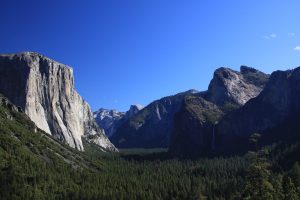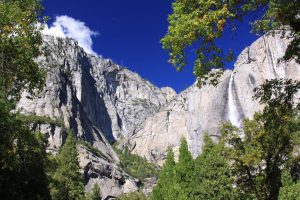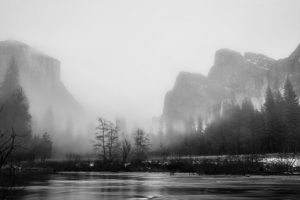The foothills in Mariposa County are generally above the incessant wintertime fog that sits in the valley floor, are slightly cooler than the sizzling hot temperatures in the valley in the summer and there is typically plenty of sunshine most of the year. Yosemite Valley sees some snow during the winter at times (elevation is about 4000 feet) but certainly doesn’t have the depth of snow that the higher elevations receive at times (above 5500 feet).
The weather in the Sierra’s can change dramatically anytime of the year especially at the higher elevations. Yosemite National Park ranges in elevation from about 2000 feet all the way to 13,000 feet. There are even two glaciers within the park’s borders. With the onset of snow at the higher elevations several roads that typically close in early November are Highway 120 (Tioga Pass Road), Badger Pass Road and Glacier Point Road.
These roads usually reopen again in late May. Note that these roads can close at any time for short times during the rest of the season either from snowfall or heavy rains which may trigger rock slides. The best time to see the waterfalls in Yosemite is from March through early June which is when the snow melts. Some of the waterfalls tend to dry up later in the summer or have a much reduced water flow.
Good times to visit the park are during the shoulder seasons including early Spring and into Fall. The weather is still reasonable but these are times of the year when the crowds are much diminished over their summertime heights.



Leave a Reply